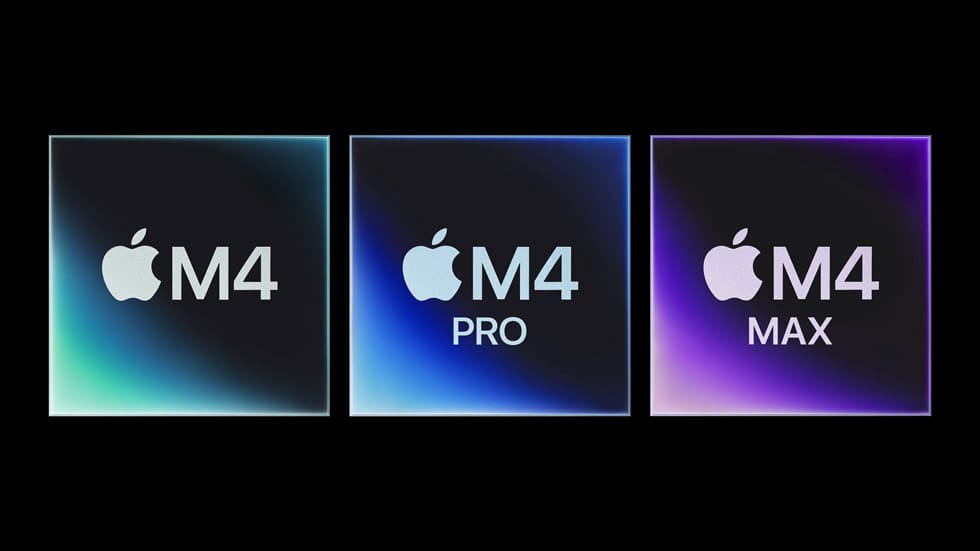In the ever-evolving landscape of computing technology, Apple’s M-series chips have consistently set new benchmarks for performance and efficiency. The latest entrant, the Apple M4 chip, continues this tradition, promising significant enhancements over its predecessors. This review delves into the M4’s architecture, performance metrics, AI capabilities, and overall value proposition in 2025.
Architectural Advancements
3nm Process Technology
The M4 chip is built on TSMC’s second-generation 3-nanometer (N3E) process, allowing for a higher transistor density and improved power efficiency. This advancement enables the M4 to deliver enhanced performance while maintaining lower power consumption compared to earlier models.
CPU and GPU Configuration
CPU: The M4 features a 10-core CPU configuration, comprising 4 performance cores and 6 efficiency cores. This setup ensures optimal performance for demanding tasks while conserving energy during lighter workloads.
GPU: Equipped with a 10-core GPU, the M4 introduces hardware-accelerated ray tracing and mesh shading, enhancing graphics rendering and gaming experiences.
Neural Engine
A standout feature is the 16-core Neural Engine, capable of performing up to 38 trillion operations per second (TOPS). This marks a significant leap from the M3’s 18 TOPS, facilitating advanced on-device AI processing.
Performance Benchmarks
Geekbench 6 Scores
Single-Core: 3,781
Multi-Core: 14,858
These scores indicate a substantial improvement over the M3, with the M4 outperforming many contemporary CPUs in both single and multi-core performance.
Cinebench 2024 Results
Single-Core: 176
Multi-Core: 972
The M4’s performance in Cinebench tests showcases its prowess in handling both single-threaded and multi-threaded applications efficiently.
3DMark Wild Life Extreme
Score: 9,807
Average FPS: 58.7
These results underscore the M4’s enhanced graphics capabilities, making it suitable for high-end gaming and graphics-intensive tasks.
AI and Machine Learning Capabilities
The M4’s Neural Engine significantly boosts AI and machine learning tasks:
On-Device Processing: Enables real-time transcription, image recognition, and other AI-driven features without relying on cloud services.
Efficiency: The enhanced Neural Engine ensures faster processing with reduced energy consumption, maintaining device longevity.
Energy Efficiency and Thermal Management
One of the M4’s notable achievements is its energy efficiency:
Power Consumption: Delivers comparable performance to the M2 while using only half the power.
Thermal Performance: Improved thermal design ensures sustained performance without overheating, even under heavy workloads.
Real-World Applications
Creative Professionals
For video editors, graphic designers, and 3D artists, the M4 offers:
Faster Rendering: Accelerated processing times in applications like Final Cut Pro and Adobe Premiere.
Enhanced Graphics: Improved GPU performance facilitates smoother workflows in graphics-intensive tasks.
Developers
Software developers benefit from:
Swift Compilation: Reduced build times in development environments.
Efficient Multitasking: Ability to run multiple virtual machines or containers simultaneously without performance degradation.
General Users
Everyday users experience:
Responsive Performance: Quick application launches and seamless multitasking.
Extended Battery Life: Longer usage times between charges, enhancing portability.
Comparison with Previous Generations
| Feature | M2 | M3 | M4 |
|---|---|---|---|
| Process Node | 5nm | 3nm | 3nm (N3E) |
| CPU Cores | 8 | 8 | 10 |
| GPU Cores | 8 | 10 | 10 |
| Neural Engine | 16-core (15.8 TOPS) | 16-core (18 TOPS) | 16-core (38 TOPS) |
| Unified Memory | Up to 24GB | Up to 24GB | Up to 32GB |
| Performance | Baseline | +15% over M2 | +30% over M3 |
The M4 demonstrates significant improvements over its predecessors, particularly in AI processing and energy efficiency.
Device Integration
The M4 chip powers several Apple devices in 2025:
MacBook Air (2025): Offers a fanless design with enhanced performance and battery life.
iPad Pro (2025): Delivers desktop-class performance in a portable form factor.
Mac Mini (2025): Provides a compact yet powerful desktop solution for professionals.
Pricing and Value Proposition
MacBook Air (13-inch): Starting at $999
MacBook Air (15-inch): Starting at $1,199
iPad Pro (11-inch): Starting at $799
iPad Pro (13-inch): Starting at $1,099
Considering the performance enhancements and energy efficiency, the M4-powered devices offer substantial value for both professionals and general consumers.
Pros and Cons
Pros
Superior Performance: Outperforms many competitors in both CPU and GPU tasks.
Energy Efficiency: Extended battery life and reduced power consumption.
Advanced AI Capabilities: Enhanced on-device machine learning processing.
Thermal Management: Maintains performance without overheating.
Cons
Limited Ports: Some devices may have fewer connectivity options.
Upgrade Costs: Higher storage and memory configurations can be expensive.
Conclusion
The Apple M4 chip represents a significant leap in computing performance and efficiency in 2025. Its integration into various Apple devices ensures that users across different domains—be it creative professionals, developers, or general consumers—experience enhanced performance, longer battery life, and advanced AI capabilities. While there are considerations regarding device ports and upgrade costs, the overall benefits position the M4 as a compelling choice for those seeking cutting-edge technology.



